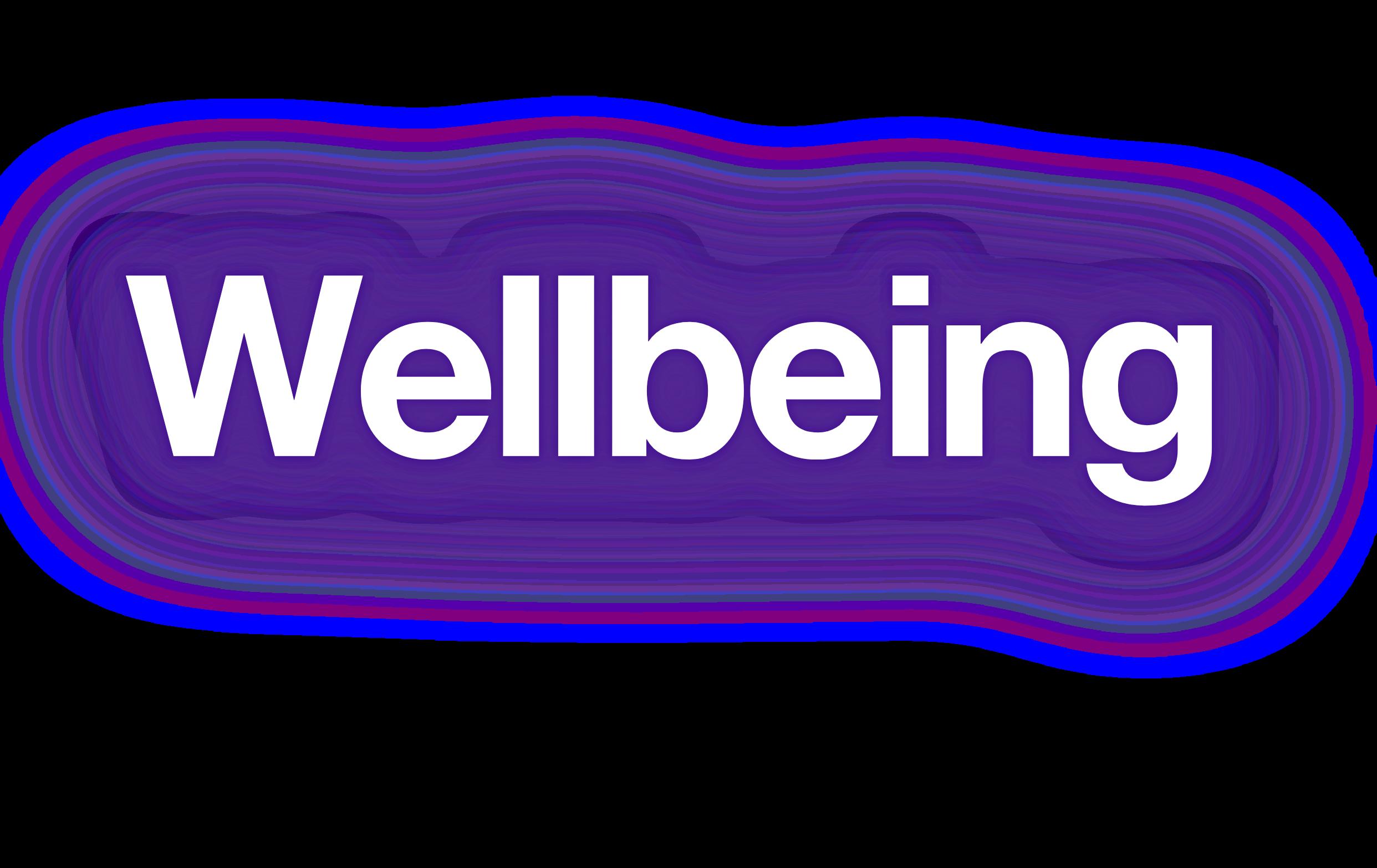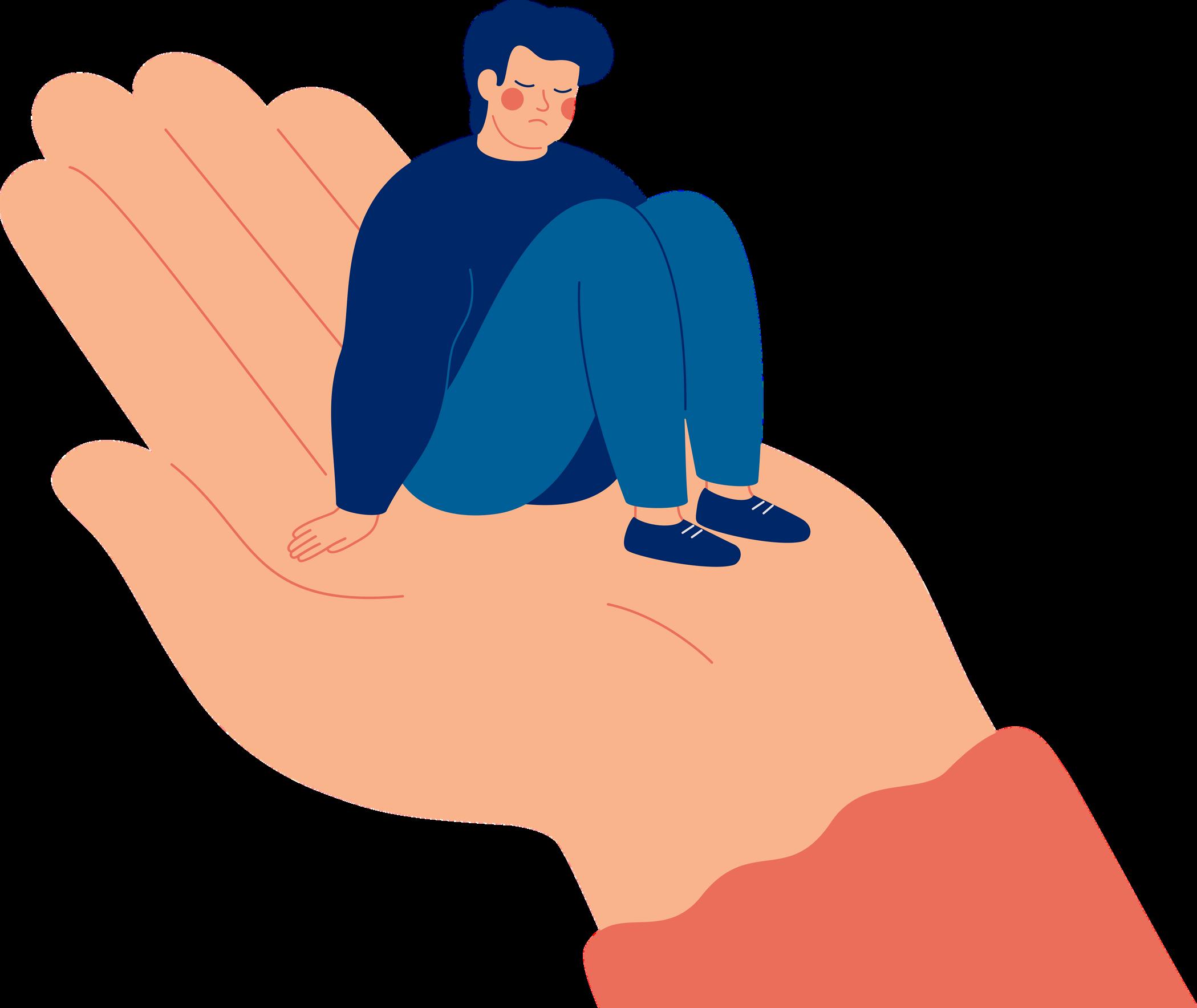

Mastering the Power of Resilience
Men’s Health Week

June Challenge
Daily Wellbeing Tips PTSD Awareness Day


Shift Work & Workplace Wellness





Mastering the Power of Resilience
Men’s Health Week

June Challenge
Daily Wellbeing Tips PTSD Awareness Day


Shift Work & Workplace Wellness



As we welcome June, our focus turns to building resilience, supporting mental health, and embracing the power of mindfulness. This month encourages us to strengthen both mind and body by staying active and staying present - all essential for mental clarity and emotional wellbeing.
With Men’s Health Week and PTSD Awareness Day on the calendar, it's the perfect time to highlight simple yet effective ways to support mental health.
Whether you're taking part in the monthly mindfulness challenge, giving back at an animal shelter, or just taking a quiet moment to walk outside - every action helps foster a healthier, more grounded you.

Do not judge me by my success, judge me by how many times I fell down and got back up again.
Nelson Mandela



June is Post-Traumatic Stress Disorder (PTSD) Awareness Month, a time dedicated to raising awareness and fostering understanding of this oftenmisunderstood mental health condition.
PTSD can affect anyone who has experienced or witnessed a traumatic event, and it’s important to recognise its impact. During this month, we focus on spreading knowledge about PTSD, its symptoms, and the ways we can offer support to those living with it.
PTSD is a psychiatric disorder that may occur in people who have experienced or witnessed a traumatic event It is characterised by intense, disturbing thoughts and feelings related to their experience that last long after the traumatic event has ended According to PTSD UK, this condition affects approximately 1 in 10 people in the UK at some point in their lives
Symptoms of PTSD can vary but generally fall into four categories:
Intrusive Thoughts: Recurrent, unwanted memories of the traumatic event, flashbacks, or nightmares
Avoidance: Avoiding reminders of the traumatic event, including places, people, activities, or thoughts that trigger memories of the trauma
Negative Changes in Thinking and Mood: This can include negative thoughts about oneself or others, feelings of hopelessness, memory problems, and difficulty maintaining close relationships.
Changes in Physical and Emotional Reactions: Being easily startled or frightened, always being on guard for danger, self-destructive behaviour, trouble sleeping, and irritability
The Importance of PTSD Awareness
Awareness is key to encouraging early intervention; and early diagnosis and treatment can significantly improve outcomes for people with PTSD When more people are aware of the symptoms and impacts of PTSD, they are better equipped to recognise these signs in themselves or others This can lead to earlier recognition of symptoms and prompt intervention, which is vital for effective treatment and recovery.

This can help friends, family, and colleagues provide better support to those affected When we can recognise the signs and symptoms, we can be better equipped to support one another This supportive environment can make a significant difference in the lives of those struggling with PTSD, helping them feel understood and less isolated
Supporting someone with PTSD involves understanding, patience, and encouragement Here are some ways to help:

Educate Yourself: Learn about PTSD and its symptoms The more you know, the better you can understand what your loved one is going through

Be Patient: Recovery from PTSD can be a long process Be patient and avoid pressuring them to “get over it ”

Listen: Offer a listening ear without judgment. Sometimes, just being there to listen can be incredibly supportive.

Encourage Professional Help: Encourage them to seek professional help if they haven’t already Therapy, medication, and support groups can be very effective

Take Care of Yourself: Supporting someone with PTSD can be challenging Make sure you also take care of your own mental health and seek support if needed
By increasing awareness, we can help reduce stigma and ensure better care and understanding for those affected by PTSD

Are you an animal lover looking for a meaningful way to make a difference?
Volunteering at a local animal shelter is a fulfilling way to help animals in need while supporting the dedicated staff who care for them. Whether you're walking dogs, playing with cats, or assisting with administrative tasks, your time and efforts will directly improve the lives of animals looking for a home. Not only will you provide muchneeded care and companionship, but you'll also help ease the workload of shelter staff, increasing the chances of animals finding loving families
So, grab your love for animals, roll up your sleeves, and get ready to make a pawsitive impact!
Here’s How to Get Started:
Find an animal shelter near you that is looking for volunteers and sign up for shifts that work with your schedule
Encourage your friends and family to volunteer as well, or share the shelter’s need for help on social media to inspire others to get involved
Decide whether you'd like to work directly with animals or assist with administrative tasks like fundraising, organising events, or helping with outreach
Commit to Regular Volunteering unt of time each week or ng, so the shelter can rely on port

Homes or foster animals to help adoptable, giving them finding a loving family
It’s a heartwarming way to make a difference, create lasting memories, and promote kindness and compassion for all creatures great and small.


Men’s Health Week is a time dedicated to raising awareness about the health issues that affect men and encouraging them to take proactive steps towards better health.
This annual event is crucial for highlighting preventable health problems and promoting early detection and treatment of diseases.
Men’s health often takes a backseat due to various factors, including societal expectations, lack of awareness, and reluctance to seek medical help. Statistics show that men are less likely to visit a doctor regularly, leading to late diagnoses of serious conditions. This month aims to change that by encouraging men to prioritise their health and wellbeing.
Several health issues predominantly affect men, and Men’s Health Month provides an opportunity to focus on these areas:
Mental health issues, including depression and anxiety, are often overlooked in men
The stigma surrounding mental health can prevent men from seeking help Promoting open conversations and providing resources for mental health support are essential steps in addressing this issue
Heart disease is the leading cause of death among men. Risk factors include high blood pressure, high cholesterol, smoking, and a sedentary lifestyle. Regular check-ups and a heart-healthy diet can significantly reduce these risks
Prostate cancer is one of the most common cancers in men Early detection through regular screenings can improve treatment outcomes Men over 50, or those with a family history of prostate cancer, should discuss screening options with their doctor
Type 2 diabetes is prevalent among men, particularly those who are overweight or have a family history of the disease Regular blood sugar monitoring and maintaining a healthy lifestyle can help manage and prevent diabetes

Testicular cancer is most common in younger men, typically between the ages of 15 and 35. Regular self-examinations can aid in early detection and treatment.
Men’s Health Month is an excellent time to encourage men to adopt healthier lifestyles Here are some practical tips:
Aim for at least 150 minutes of moderateintensity exercise per week Activities like walking, cycling, and swimming can improve cardiovascular health and overall fitness This can be made easier with exercise plans and apps like Couch to 5K or Active10
A diet rich in fruits, vegetables, lean proteins, and whole grains can help maintain a healthy weight and reduce the risk of chronic diseases
Regular medical check-ups can help detect potential health issues early. Men should schedule annual physical exams and discuss any health concerns with their doctor.
Encourage open discussions about mental health and seek professional help if needed Practices like mindfulness, meditation, and stress management techniques can also support mental wellbeing Organisations like MANUP? , Andys Man Club, Directions for Men and Men Matter Scotland offer support tailored to men and men’s mental health support needs.

Resilience is the ability to bounce back from adversity, adapt to challenging situations, and maintain a positive outlook despite difficulties It is a crucial aspect of mental wellbeing, enabling individuals to navigate life’s ups and downs with greater ease and confidence Developing your resilience can help you manage stress, improve your health, overcome obstacles, and thrive in both personal and professional settings
Resilience is not an innate trait; it is a skill that can be developed and strengthened over time It involves a combination of behaviours, thoughts, and actions that can be learned and practised. Key components of resilience include:
Emotional Regulation
The ability to manage and respond to your emotions in a healthy way
Optimism
Maintaining a positive outlook and expecting good things to happen
Self-Efficacy
Believing in your ability to influence events and outcomes in your life
Social Support
Having a network of supportive relationships that provide encouragement and assistance
Problem-Solving Skills
The ability to identify solutions and take effective action in the face of challenges.
Harvard Medical School reports that building resilience can lead to numerous benefits, including improved mental health, as resilient individuals are less likely to experience anxiety, depression, and other mental health issues
It also enhances problem-solving skills by helping you approach challenges with a proactive and solutionfocused mindset Additionally, resilience contributes to greater life satisfaction, as resilient people tend to have a more positive outlook on life and higher levels of overall satisfaction
Cultivate a Positive Mindset: Focus on the positive aspects of your life and practice gratitude Keeping a gratitude journal can help you recognise and appreciate the good things, even during tough times
Develop Strong Relationships: Build and maintain supportive relationships with family, friends, and colleagues Social connections provide emotional support and can help you navigate difficult situations
Practice Self-Care: Take care of your physical and mental health by engaging in regular exercise, eating a balanced diet, getting enough sleep, and practising relaxation techniques such as mindfulness or meditation
Set Realistic Goals: Break down your goals into manageable steps and celebrate your progress along the way Achieving small milestones can boost your confidence and motivation.
Learn from Experience: Reflect on past experiences and identify what you have learned from them. Understanding how you have overcome previous challenges can provide valuable insights and strengthen your resilience
Stay Flexible: Be open to change and willing to adapt your plans as needed Flexibility allows you to respond more effectively to unexpected events and reduces the stress associated with rigid thinking
Shift work is a vital element in many sectorshealthcare, transport, manufacturing, and emergency services, to name a few. While essential, it often brings health and wellbeing challenges that cannot be overlooked.
Irregular hours disrupt the body’s natural circadian rhythm, leading to fatigue, poor sleep quality, and reduced alertness. Over time, shift work has been linked to an increased risk of chronic conditions such as cardiovascular disease, type 2 diabetes, and depression. Mental health may also suffer, as night shift workers in particular can experience social isolation and difficulty maintaining a healthy work-life balance
To address these issues, a proactive approach to employee wellbeing is essential.
Thoughtful rota design plays a pivotal role in supporting wellness Avoiding quick turnarounds - where a worker finishes a late shift and returns early the next morning gives employees time to rest and recover Where feasible, employers should involve workers in rota planning, offering flexibility and input into scheduling Empowering employees with some control over their shifts can improve job satisfaction and reduce stress
Organisations should educate staff about sleep hygiene - practices that promote better quality sleep, such as maintaining a consistent sleep routine, reducing caffeine and screen exposure before bed, and creating a quiet, dark sleep environment
Providing designated quiet areas at work for rest breaks or short naps during long or night shifts can also improve alertness and reduce the likelihood of fatigue-related incidents

Food choices during shifts often lean towards convenience rather than nutrition. Access to healthy meals and snacks even during night shifts makes a significant difference. Employers can partner with on-site caterers or provide fresh food vending machines with nutritious options
Keeping workers hydrated is also crucial
Readily available water stations, and encouraging regular hydration, can support cognitive function and physical health
Mental health must be treated with the same priority as physical safety For many shift workers, stress can come from irregular routines, family conflicts over timing, or simply feeling disconnected from daytime life
Providing access to mental health resources, such as counselling services or employee assistance programmes (EAPs), offers a vital safety net. Line managers can be trained to recognise early signs of burnout, fatigue, or emotional distress, and encouraged to have regular, informal check-ins with team members.
Shift workers often feel disconnected, missing out on meetings, training, and social events held during standard hours.
To create a more inclusive culture, organisations should ensure access to key communications and development opportunities across all shifts, and recognise contributions equally
Supporting shift worker wellbeing is a shared responsibility Organisations that invest in the wellbeing of their shift workers not only reduce absenteeism and turnover but also improve morale, productivity, and safety




Mindfulness is the practice of being fully present in the moment, without judgment It can help reduce stress, improve focus, and enhance overall wellbeing
Develop mindfulness techniques and relieve stress by incorporating daily mindfulness practices over the next 30 days
Find a quiet space: Choose a peaceful place where you won't be disturbed
Focus on your breath: Pay attention to your breath as it enters and leaves your body
Notice your sensations: Become aware of your physical sensations, such as the touch of your clothes on your skin or the feeling of your feet on the floor
Observe your thoughts: Notice your thoughts without judging them Let them pass without getting caught up in them
Practice non-judgment: Accept your thoughts and feelings without judgment
Day 1: Begin with 5 minutes of mindful breathing Sit in a quiet place, focus on your breath, and observe without judgment
Day 2: Practice a mindful morning routine
Spend your first 10 minutes after waking up free of distractions (no phone or TV), focusing on the sensations of waking up
Day 3: Eat a meal mindfully Pay attention to the taste, texture, and smell of each bite
Avoid distractions like phones or TV while eating
Day 4: Do a body scan meditation for 5-10 minutes, paying attention to how each part of your body feels, starting from your toes to your head
Day 5: Practice mindful listening During a conversation, focus completely on the other person without planning your response or getting distracted

Day 6: Spend 10 minutes noticing the details around you during a walk Focus on the sounds, colours, and textures in your environment
Day 7: Practice gratitude Write down 3 things you’re grateful for today and take a moment to reflect on each
Day 8: Start your day with a 10-minute guided meditation using an app or YouTube video
Day 9: Practice mindful movement by focusing on your breath and body during an activity like yoga, stretching, or walking
Day 10: Perform a 5-minute "mindful pause" during your day Stop what you’re doing, take deep breaths, and bring awareness to your thoughts and surroundings
Day 11: Set an intention for the day (e g , "I will be patient," "I will stay present") and reflect on it throughout the day
Day 12: Spend 10 minutes outside, fully immersing yourself in the sights, sounds, and smells of nature
Day 13: Do a mindful reflection at the end of your day Sit quietly and review the day without judgment, noticing how you felt and what stood out to you
Day 14: Focus on mindful breathing for 5 minutes before bed to help you unwind and clear your mind for sleep
Day 15: Try a loving-kindness meditation for 10 minutes Focus on sending feelings of compassion and kindness to yourself and others
Day 16: Take 3 mindful breaths before starting any new task today Use this to reset your focus and centre yourself
Day 17: Practice non-judgmental awareness Notice when negative thoughts arise, and gently let them pass without engaging or judging them
Day 18: Unplug for an hour no phones, computers, or other distractions Spend this time being present in whatever activity you choose
Day 19: When you feel stressed, pause and take 10 deep breaths, paying attention to how your body feels with each breath
Day 20: Practice mindful driving or commuting
Focus on the sensations of driving or moving, being fully aware of your surroundings
Day 21: Set aside 10 minutes for a focused breathing exercise, bringing your attention back to the breath every time your mind wanders
Day 22: Start the day by journaling for 5 minutes about your current thoughts, feelings, and intentions for the day.
Day 23: Notice your emotional reactions. When you feel a strong emotion, pause and label it (e g , “I am feeling angry”) before responding
Day 24: Take a mindful walk, focusing on the physical sensations of each step and your connection to the ground
Day 25: Practice mindful gratitude again, writing down 3 things you’re thankful for today
Day 26: When eating today, take at least one meal in complete silence to focus entirely on the experience
NHS Mindfulness
Mindful
Mindful Eating
Mindful Walking Mindfulness App 10% Happier Podcast

Day 27: Use mindful technology only check your phone or email at designated times and focus completely on one task at a time
· Day 28: Reflect on your thoughts at the end of the day Write about how practicing mindfulness has impacted your stress levels and focus
· Day 29: Reflect on your mindfulness journey this month. How has your awareness, focus, or stress changed?
Day 30: Set a long-term mindfulness goal, such as meditating for 10 minutes daily or practicing mindfulness during daily tasks Plan to continue incorporating mindfulness into your routine
Dedicate one day to being fully present in all your activities. Focus on one task at a time, whether it's eating, working, or spending time with loved ones, without distractions like phones or multitasking.

These skewers are marinated in a flavourful balsamic mixture and grilled to perfection, making them a great option for a summer barbecue or a quick weeknight dinner!
Ingredients
1 pound sirloin steak, cut into 1-inch cubes
8 oz cremini or button mushrooms, cleaned and stems trimmed
1 red bell pepper, cut into 1-inch pieces
1 yellow bell pepper, cut into 1-inch pieces
1 medium red onion, cut into wedges
2 tablespoons olive oil
Salt and pepper to taste
Skewers (wooden or metal)
For the Balsamic Marinade
½ cup balsamic vinegar
2 tablespoons olive oil
2 cloves garlic, minced
1 teaspoon dried oregano
1 teaspoon dried thyme
1 teaspoon honey or maple syrup (optional, for sweetness)
Salt and pepper to taste



Method
1. Prepare the Marinade. In a medium bowl, whisk together the balsamic vinegar, olive oil, minced garlic, oregano, thyme, honey (if using), salt, and pepper. Reserve a couple of tablespoons of the marinade for brushing during grilling
2 Marinate the Steak Place the cubed steak in a large resealable plastic bag or a shallow dish Pour the marinade over the steak, ensuring all pieces are coated Seal the bag or cover the dish and refrigerate for at least 30 minutes (up to 2 hours for more flavour)
3 Prepare the Vegetables While the steak is marinating, prepare the vegetables If using wooden skewers, soak them in water for about 30 minutes to prevent burning on the grill
4 Build the Skewers Preheat your grill to mediumhigh heat Thread the marinated steak, mushrooms, bell peppers, and onion onto the skewers, alternating the ingredients for a colourful presentation
5 Grill the Skewers Lightly brush the grill grates with oil to prevent sticking Place the skewers on the grill and cook for about 8-10 minutes, turning occasionally, until the steak reaches your desired doneness, and the vegetables are tender. During grilling, brush the skewers with the reserved marinade.
6. Serve. Remove the skewers from the grill and let them rest for a few minutes before serving Serve the skewers with your favourite side dishes, such as rice, quinoa, or a fresh salad
Feel free to add other vegetables like courgette, cherry tomatoes, or asparagus based on your preference.
Use a meat thermometer to check the internal temperature of the steak: 130°F (54°C) for mediumrare, 140°F (60°C) for medium, and 160°F (71°C) for well-done
Garnish with fresh herbs like parsley or basil for added flavour and presentation
Enjoy your Balsamic Steak & Mushroom
Skewers for a flavourful and satisfying meal!
Share Your Results on Social Media
Tag us @tachealtchare

TAC Healthcare’s Menopause Support Service helps organisations champion female employees by providing a holistic approach to menopausal care. Combining expert medical guidance, psychological support, nutritional advice, and customised resources, our programme addresses the physical, emotional, and mental challenges of menopause - promoting an inclusive, supportive working environment.

Boost Employee Morale
Recognising menopause in the workplace demonstrates your commitment to inclusion, increasing employee satisfaction and retention
Increased Productivity


Providing access to menopause-specific resources and interventions can help manage symptoms, leading to improved performance and overall productivity
Enhance Company Reputation

Showing empathy and understanding around women’s health fosters a culture of diversity and inclusion, attracting top talent and socially responsible clients
Menopause Guidance

Private GP Consultations
Psychological & Emotional Support
Nutritional Guidance
Ongoing Support & Resources
Professional Diagnosis Services
Confidential Medication Support













By downloading the calendar you'll also receive monthly updates on our new magazine issues, packed with fresh insights and actionable tips to help your workforce thrive
✅ Support Wellbeing and Work-Life Balance
✅ Enhance Employee Engagement
✅ Promote Inclusivity & Diversity


At TAC Healthcare, we provide specialist mental health services to help employees build resilience, manage stress, and overcome challenges. From routine counselling to post-incident support, our evidence-based therapies empower teams to stay focused and confident in demanding environments.
At TAC Healthcare, we provide comprehensive mental health services to help you minimise the impact of workplace incidents and promote healthier, happier and more productive team.
Cognitive Behavioural Therapy (CBT)
BABCP-accredited therapy for stress, anxiety, depression, and panic, delivered remotely or faceto-face
Trauma & PTSD Support




Recent study by Mental Health UK has identified that for every £1 invested in mental health interventions, employers receive an average return of £5.
Supporting mental health in the workplace has never been more important, and we fully recognise and value the role that employers play when they take positive action to provide workplace mental health and wellbeing support to their staff

Specialist care for post-traumatic stress, helping employees recover and regain control
Eye Movement Desensitisation Reprocessing (EMDR)
A structured therapy reducing nightmares, flashbacks, and distress linked to trauma.
Trauma Risk Management (TRiM)
Rapid-response trauma support for critical workplace incidents, providing immediate guidance and structure.
Counselling Services
Confidential support to explore emotions, patterns, and personal challenges, fostering selfawareness and mental wellbeing.
Mental Health Training




Customised courses in resilience, mental health first aid, and wellbeing, supporting employees onshore and offshore.
Contact your account manager for more information.
Or, if you’re new to TAC Healthcare, contact us on 0333 014 3488 or at businessdevelopment@tachealthcare com

